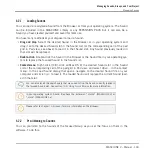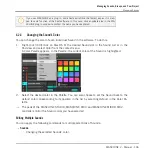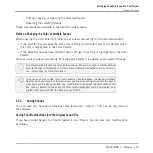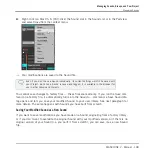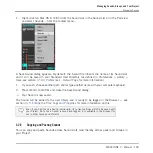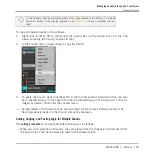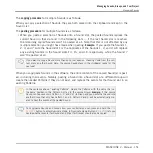
4
Managing Sounds, Groups, and Your Project
This chapter explains how to handle the various objects that structure any MASCHINE Project:
Sounds, Groups, and the Master.
4.1
Overview of the Sounds, Groups, and Master
In a MASCHINE Project, objects are organized into three hierarchic levels, from the lowest to
the highest:
▪
Sounds are played by the pads. They are loaded into Sound slots. In the software, in Ar-
range view Sound slots are displayed in the column at the left of the Pattern Editor: the
Sound List (1). Each Sound of the selected Group is by default mapped to one of the 16
pads on the MASCHINE hardware controller, so you can play all Sounds of a Group by
pressing the pads. Sounds are made up of any number of Plug-ins that process the audio
in series. Sounds are the only objects in MASCHINE that can accept Instrument Plug-ins
— these go in the Sounds’ first Plug-in slot. The type of the Plug-in (Instrument or Effect)
loaded in this first Plug-in slot will define the Sound’s role (audio source or bussing point,
respectively). For more information on Plug-ins and how they define the Sound’s role,
please refer to section
.
▪
Groups contain 16 Sound slots each with all their parameters. The 16 pads on your control-
ler can play one entire Group at a time. In the software, in Arrange view Group are dis-
played in the column at the left of the Arranger: the Group List (2). A MASCHINE Project
can have any number of Groups, which are organized in banks of eight Groups each. Each
Group can have any number of insert effects, which will globally apply to all Sounds con-
tained in that Group, as well as any number of Patterns organized in banks of 16 Patterns
each. More on Patterns in chapter
.
▪
The Master is the place where all signals from the Groups are being mixed together. Just
like the Groups and Sounds, the Master can host any number of insert effects.
Managing Sounds, Groups, and Your Project
Overview of the Sounds, Groups, and Master
MASCHINE 2 - Manual - 136























